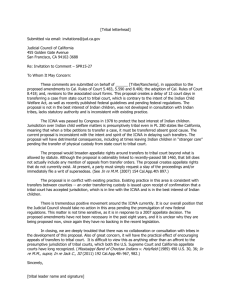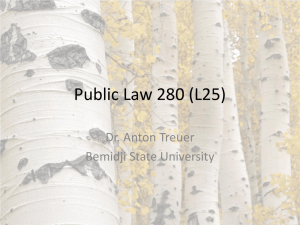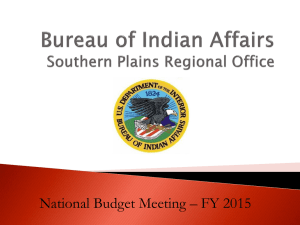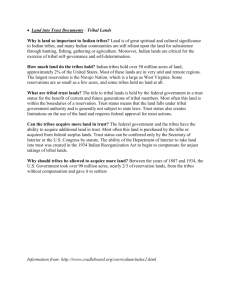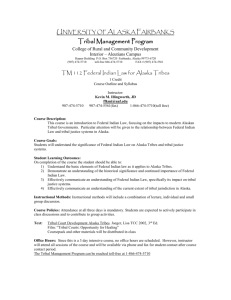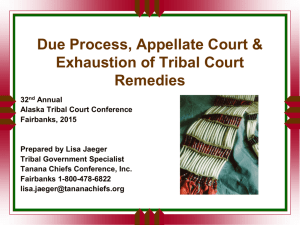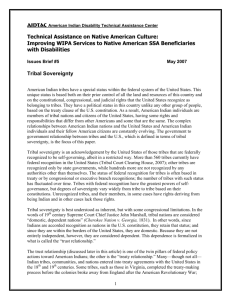Facts About Tribal Courts
advertisement
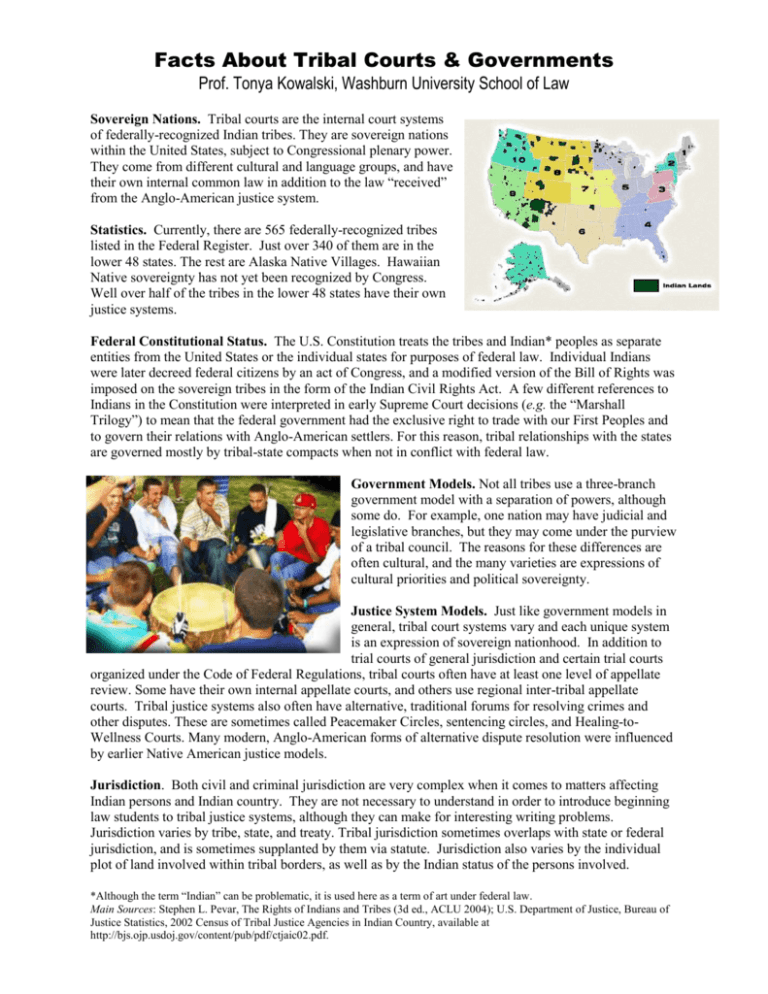
Facts About Tribal Courts & Governments Prof. Tonya Kowalski, Washburn University School of Law Sovereign Nations. Tribal courts are the internal court systems of federally-recognized Indian tribes. They are sovereign nations within the United States, subject to Congressional plenary power. They come from different cultural and language groups, and have their own internal common law in addition to the law “received” from the Anglo-American justice system. Statistics. Currently, there are 565 federally-recognized tribes listed in the Federal Register. Just over 340 of them are in the lower 48 states. The rest are Alaska Native Villages. Hawaiian Native sovereignty has not yet been recognized by Congress. Well over half of the tribes in the lower 48 states have their own justice systems. Federal Constitutional Status. The U.S. Constitution treats the tribes and Indian* peoples as separate entities from the United States or the individual states for purposes of federal law. Individual Indians were later decreed federal citizens by an act of Congress, and a modified version of the Bill of Rights was imposed on the sovereign tribes in the form of the Indian Civil Rights Act. A few different references to Indians in the Constitution were interpreted in early Supreme Court decisions (e.g. the “Marshall Trilogy”) to mean that the federal government had the exclusive right to trade with our First Peoples and to govern their relations with Anglo-American settlers. For this reason, tribal relationships with the states are governed mostly by tribal-state compacts when not in conflict with federal law. Government Models. Not all tribes use a three-branch government model with a separation of powers, although some do. For example, one nation may have judicial and legislative branches, but they may come under the purview of a tribal council. The reasons for these differences are often cultural, and the many varieties are expressions of cultural priorities and political sovereignty. Justice System Models. Just like government models in general, tribal court systems vary and each unique system is an expression of sovereign nationhood. In addition to trial courts of general jurisdiction and certain trial courts organized under the Code of Federal Regulations, tribal courts often have at least one level of appellate review. Some have their own internal appellate courts, and others use regional inter-tribal appellate courts. Tribal justice systems also often have alternative, traditional forums for resolving crimes and other disputes. These are sometimes called Peacemaker Circles, sentencing circles, and Healing-toWellness Courts. Many modern, Anglo-American forms of alternative dispute resolution were influenced by earlier Native American justice models. Jurisdiction. Both civil and criminal jurisdiction are very complex when it comes to matters affecting Indian persons and Indian country. They are not necessary to understand in order to introduce beginning law students to tribal justice systems, although they can make for interesting writing problems. Jurisdiction varies by tribe, state, and treaty. Tribal jurisdiction sometimes overlaps with state or federal jurisdiction, and is sometimes supplanted by them via statute. Jurisdiction also varies by the individual plot of land involved within tribal borders, as well as by the Indian status of the persons involved. *Although the term “Indian” can be problematic, it is used here as a term of art under federal law. Main Sources: Stephen L. Pevar, The Rights of Indians and Tribes (3d ed., ACLU 2004); U.S. Department of Justice, Bureau of Justice Statistics, 2002 Census of Tribal Justice Agencies in Indian Country, available at http://bjs.ojp.usdoj.gov/content/pub/pdf/ctjaic02.pdf.

